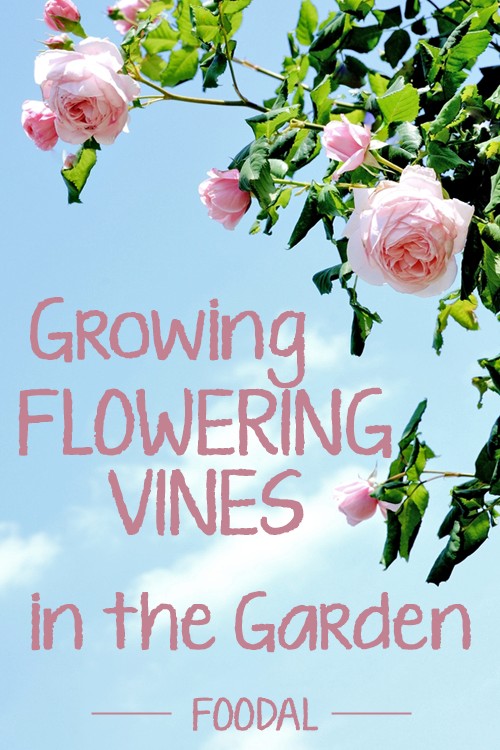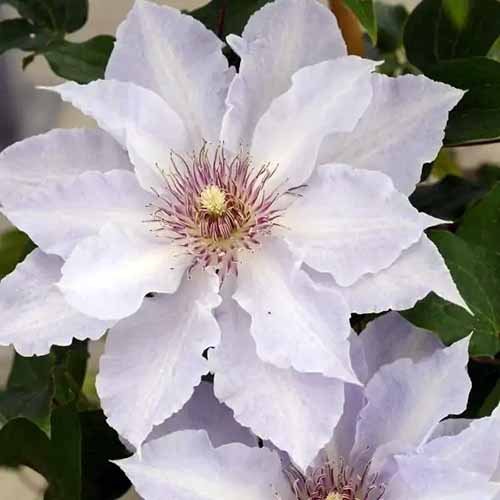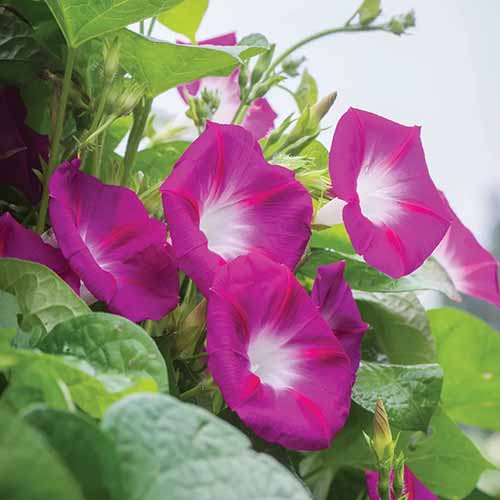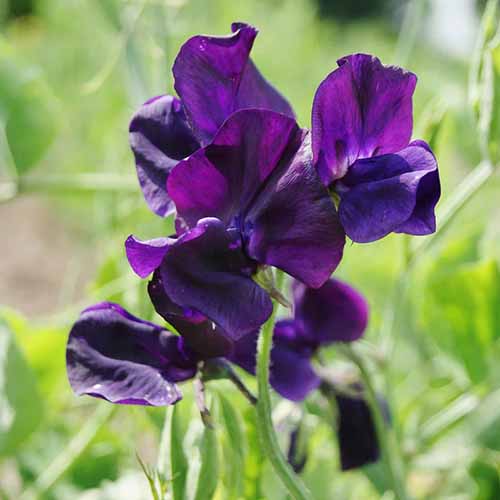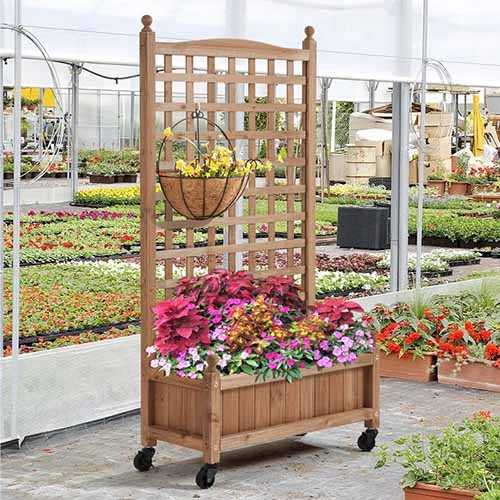Flowering vines make intriguing garden specimens, showcasing both color and character.
They are easy to grow and maintain, yet they can extend beyond their boundaries if they’re not correctly cared for.
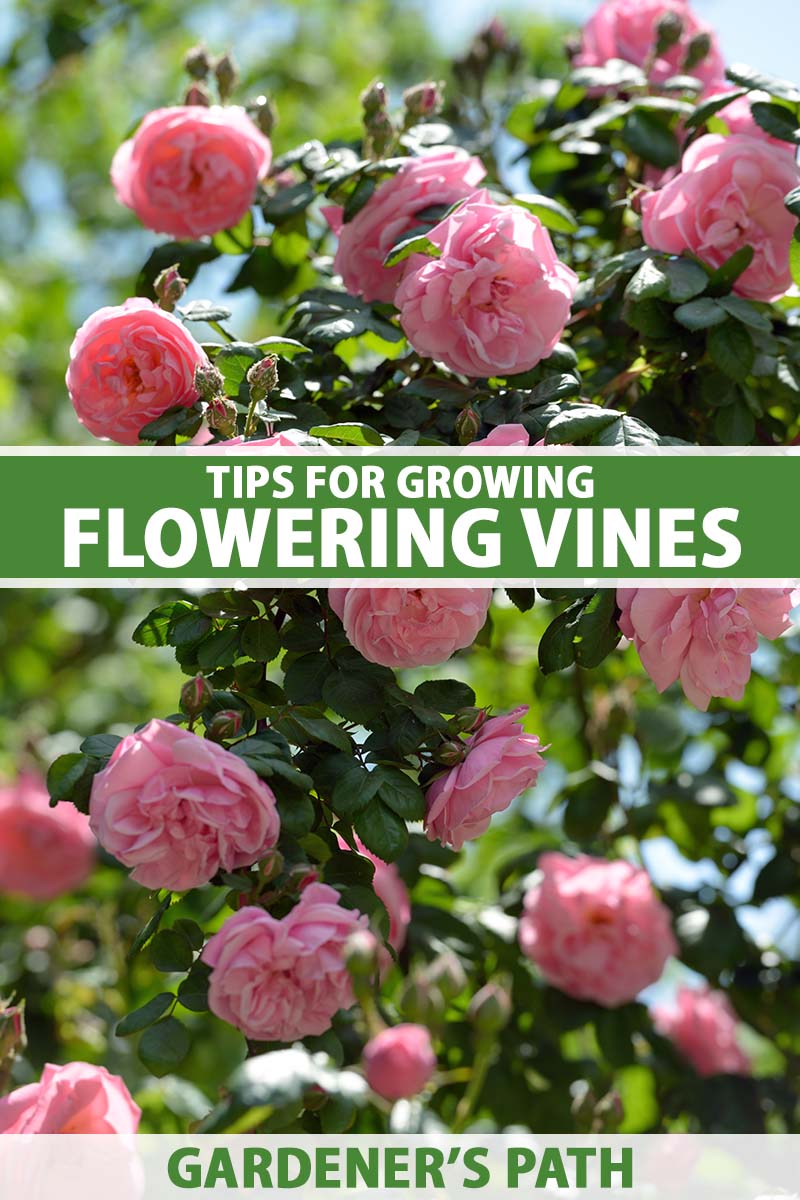
We link to vendors to help you find relevant products. If you buy from one of our links, we may earn a commission.
Some varieties are aggressive to the point of overtaking the garden as well as the surrounding landscape.
Vigorous growth and spreading can quickly turn these spirited plants into annoying pests.
However, with proper care and maintenance, even the most aggressive varieties can become beautiful additions to nearly any landscape.
This article discusses how to introduce flowering vines to the home garden. Here’s what we’ll cover:
What You’ll Learn
Let’s begin!
Why Grow Vines?
Before choosing specific cultivars for the garden, consider their purpose.
For instance, do you want a privacy hedge or additional shade?
Do you have a sloped area prone to erosion or a flat site needing an adequate wind break?
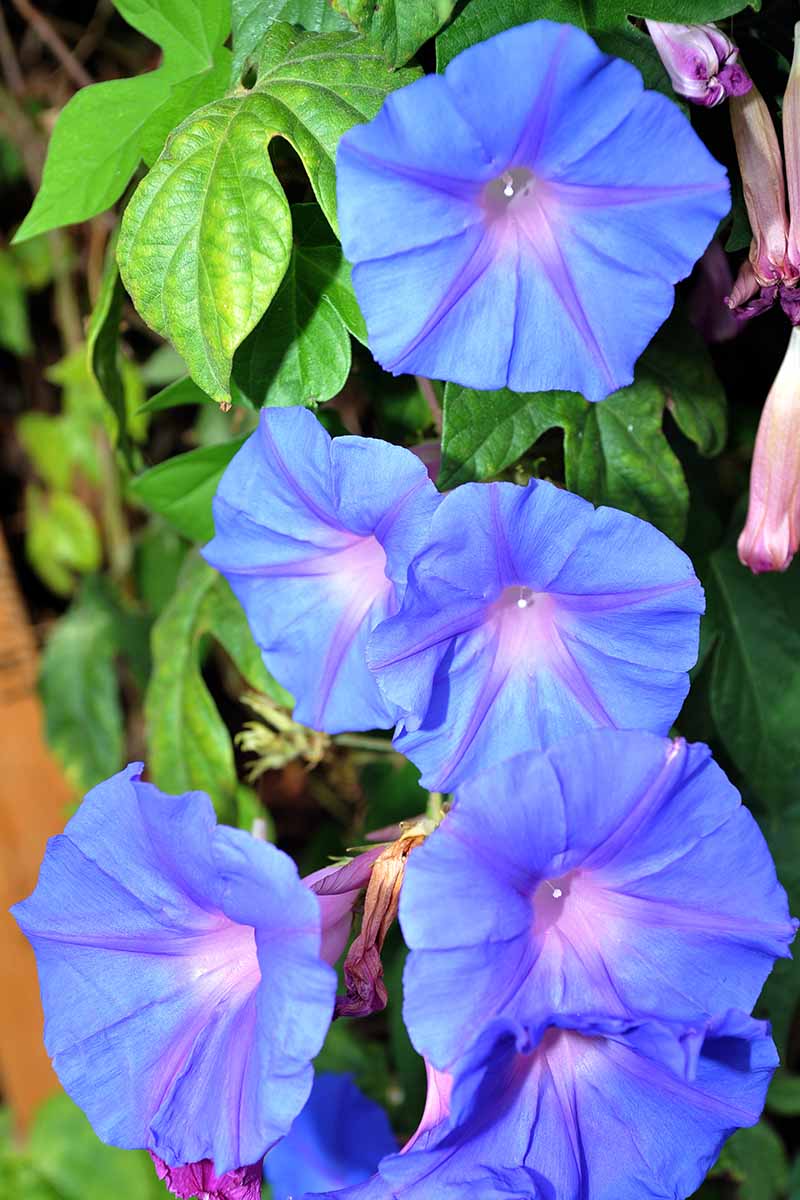
Vines of all types can also add height, maximizing the vertical space within a garden.
Flowering vines can be functional landscape additions or simply colorful accents that add a sense of movement to the outdoor living space.
The formula for successful cultivation begins with choosing wisely. Start by determining your USDA Hardiness Zone.
Cultural Requirements
Next, consider the soil conditions in your landscape and factors like humidity, air temperature, and light to avoid any possible problems that may arise later.
Your local agricultural extension service can advise you on conducting a soil test to determine the pH balance and nutrients your soil contains and recommend ways to amend it as needed.
Select species and cultivated varieties suited to your USDA Hardiness Zone and soil conditions.
Selecting an appropriate site is essential. Most flowering vines require at least six hours of sunlight daily.
They will typically tolerate various soil types; however, moist, well-drained soil is generally preferable.
Varieties to Choose
Not all flowering vines are alike. There are annuals and perennials, herbaceous and woody, and deciduous and evergreen species and cultivars.
In addition, they also trail and spread in various ways.
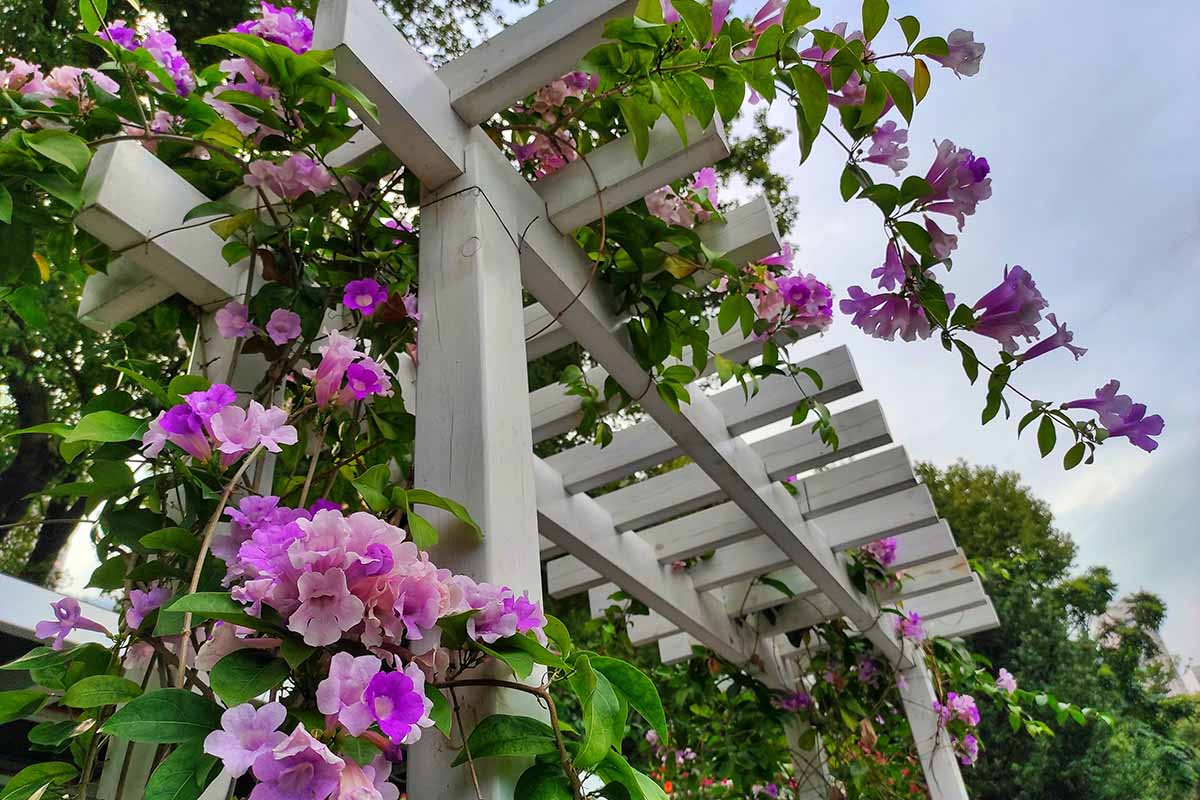
Twining types have flexible stems that wrap or twine around an object. They may twist and turn into the path of other plants and wrap around them.
Examples are morning glory, wisteria, honeysuckle, jasmine, and hyacinth bean.
Clinging stems attach to surfaces using suckers or hooks to adhere to them for support.
They work their way quite easily up walls. Virginia creeper, firethorn, and others such as ivies are good examples of this type.
Tendrils are threadlike, twist around objects in proximity, and include clematis, passionflower, and sweet pea.
Creeping varieties use their long stems to sprawl over objects but require tying or weaving to keep them in place. Climbing roses are the most common examples of this growth habit.
Where to Buy
You’ll find a wide variety of flowering vines available. Here are three to whet your appetite:
Boulevard Tranquilité Clematis
Sun-loving Boulevard® Tranquilité™ clematis, Clematis ‘Evipo 111,’ displays icy cool blooms consisting of a double row of crisp, white sepals, a hint of lavender, and ruffled margins.
Boulevard® Tranquilité™ Clematis
Plants are perennial and suited to Zones 4 to 9. They have a bushy growth habit perfect for small-space gardening. Mature dimensions are four to five feet long with a spread of three feet.
Boulevard® Tranquilité™ clematis is available from Nature Hills Nursery.
Learn more about growing clematis in our guide.
Party Dress Morning Glory
Early-blooming annual ‘Party Dress’ morning glory, Ipomoea purpurea ‘Party Dress,’ is a prolific bloomer in full sun placements.
Its velvety magenta blooms measure two to three inches across. Snowy-white throats increase the visual appeal, adding depth and contrast.
Expect a length of six to seven feet and a spread of six feet.
‘Party Dress’ morning glory seeds are available from Burpee.
See our guide to growing morning glories for more information.
Royal Navy Sweet Pea
Annual ‘Royal Navy’ sweet pea, Lathyrus odoratus ‘Royal Navy,’ boasts fragrant, deep purple to navy blue blossoms, depending on the available soil nutrients.
Expect a length of six to seven feet with straight stems suited to cutting for bouquets. Sweet peas prefer some afternoon shade in the warmest zones.
‘Royal Navy’ sweet pea seeds are available from Eden Brothers.
Our guide to growing sweet peas has more information.
Structural Support
Most species and cultivars require structural support to accommodate their trailing tendencies.
For optimal health and appearance, provide a wall, trellis, string grid, pole, pergola, or arbor for them to climb.
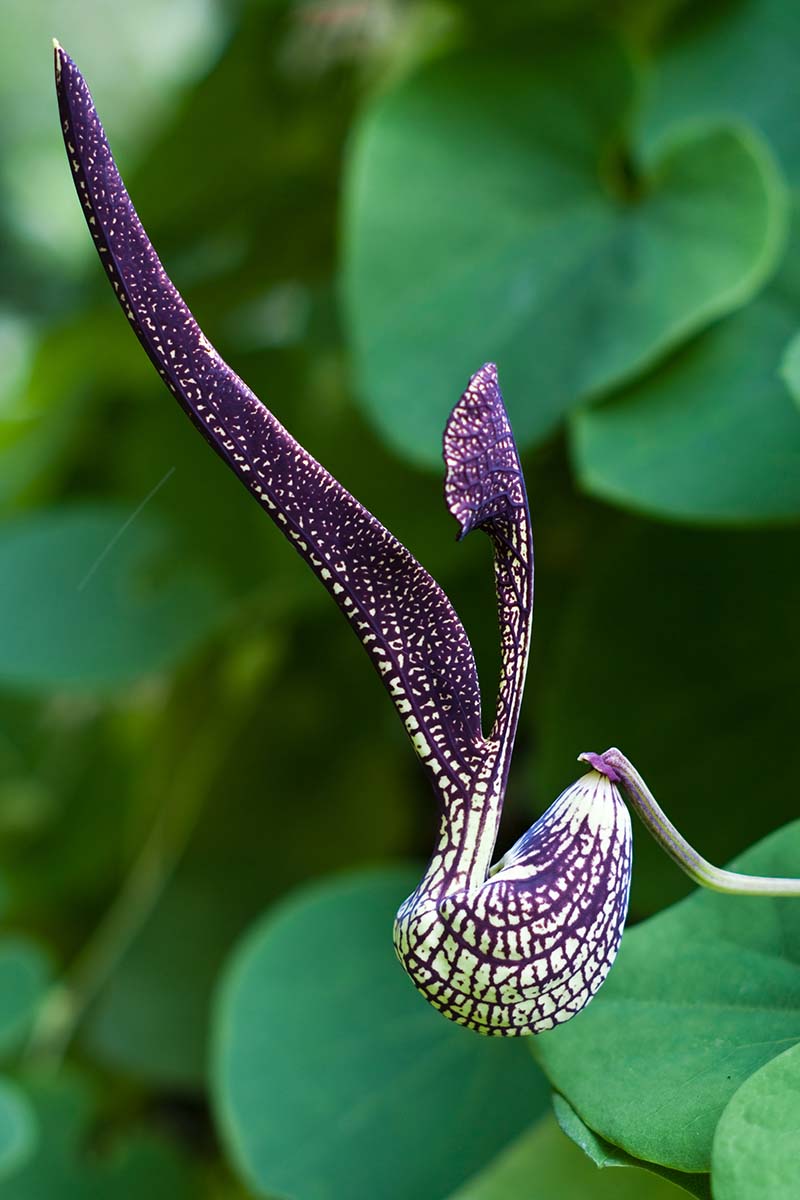
Heavier varieties with woody stems, like grape, wisteria, trumpet, and Dutchman’s pipe, require sturdy armatures, such as an iron arbor, to withstand their weight.
Here are two decorative structural pieces you may like:
Constructed of black powder-coated steel, two Abellas Bauzo Steel Gothic Trellises are included in this set, each measuring 48.25 by 12 inches.
Abellas Bauzo Steel Gothic Trellis (Set of 2)
Freestanding trellises like this are perfect for keeping vines off buildings.
The set is available from Wayfair.
Next, the Allistir Wood Outdoor Planter Box with Trellis is perfect for small spaces and plants that need to be moved out of the sun on hot afternoons.
Made of weather- and UV-resistant, carbonized, solid wood, this product offers a trellis and planter in one.
Four caster wheels provide the added convenience of rolling the planter as desired.
Allistir Wood Outdoor Planter Box with Trellis
Overall dimensions are 45.3 by 25.2 by 1.3 inches. The trellis has a weight capacity of 50 pounds, and the planter can hold 110 pounds.
The Allistir Wood Outdoor Planter Box with Trellis is available from Wayfair.
Let the nature of the plants you consider guide your choices.
Creeping varieties require securing with bits of twine or pantyhose to keep them traveling in the desired directions.
You can also use garden ties such as these:

With Velcro’s One-Wrap Garden Ties, you cut the desired lengths, attach climbing stems to their support structures, and direct them as desired.
The soft, flexible green Velcro is easy to cut, blends well with flora, adheres firmly, and removes easily for reuse.
One-Wrap Garden Ties are available from Velcro via Amazon.
In addition to attaching stems with ties, you can hand-weave some sturdier ones in and out of openings, like those in lattice and chain links, directing them as desired.
If you choose clinging types, beware.
Aggressive varieties can cause damage to siding, shingles, and brick, especially if it’s already compromised by cracking and in a state of disrepair.
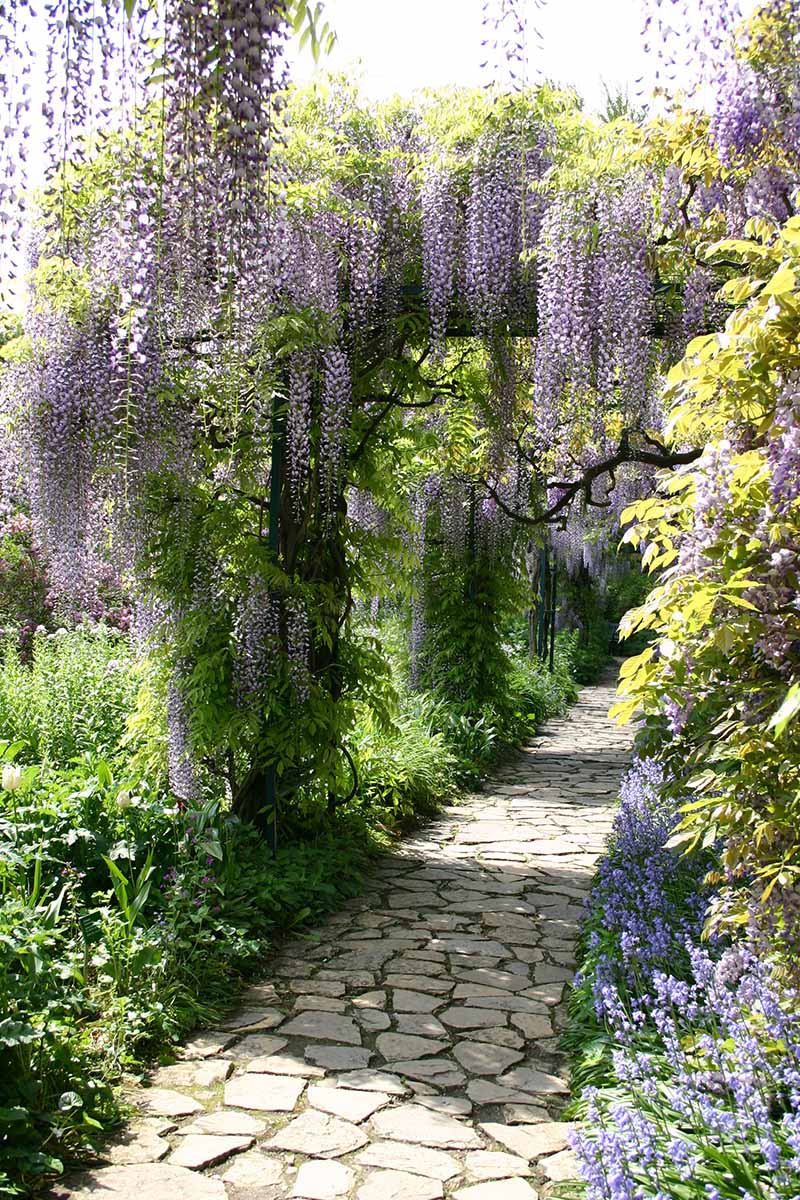
They can also damage trees, adding weight to the branches, penetrating bark, blocking air and light, and competing for soil nutrients.
Flowering species and cultivars of smaller stature grow well in containers.
Let them cascade downward from a hanging basket or window box, or train them up a trellis set into a pot on the balcony, deck, or patio floor.
These are great options for those who garden in small spaces.
Care and Maintenance
Proper water management is essential. The key is to water deeply.
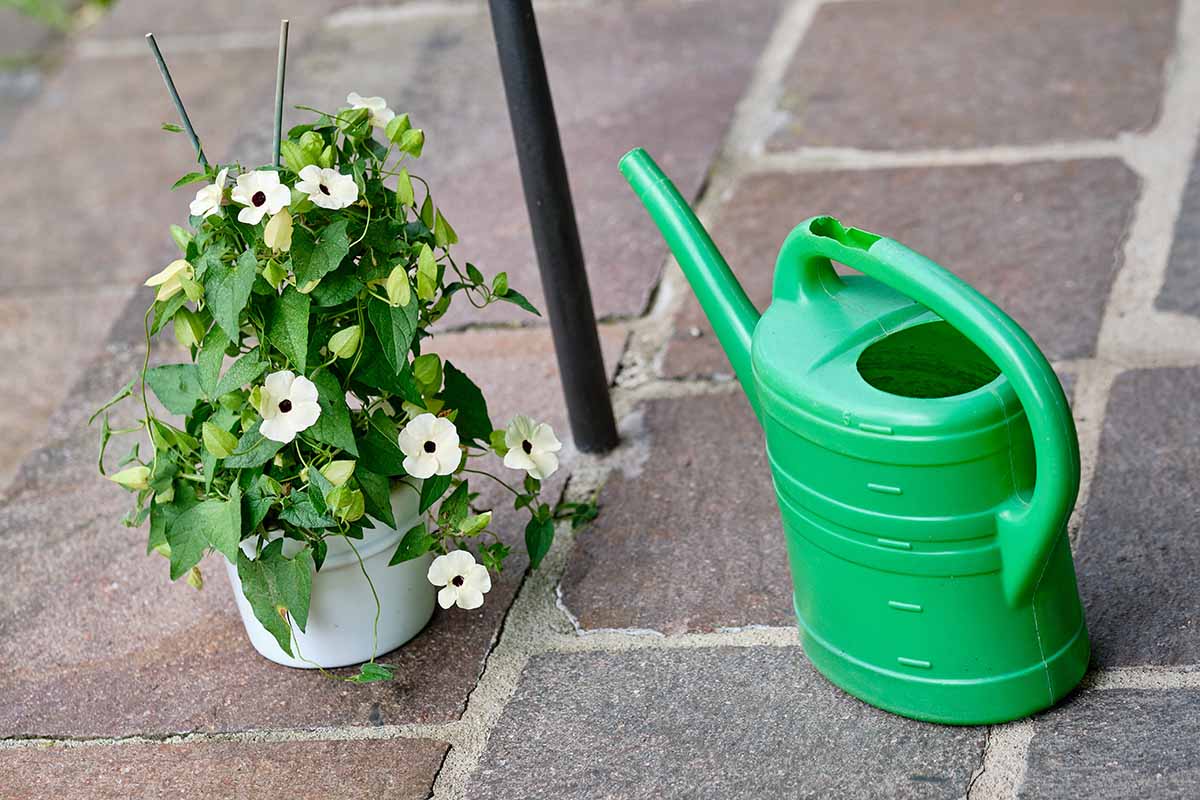
Avoid watering too often, as this can stress or oversaturate plants. Instead, allow the soil to dry out before watering again.
Fertilize climbing plants sparingly.
Pruning vines in late winter or early spring is imperative to keep plants within their boundaries and support healthy new growth.
Vines for All Settings
Vines add motion and color to the landscape, laden with blooms, trailing up and over walls, trellises, and other decorative structures.
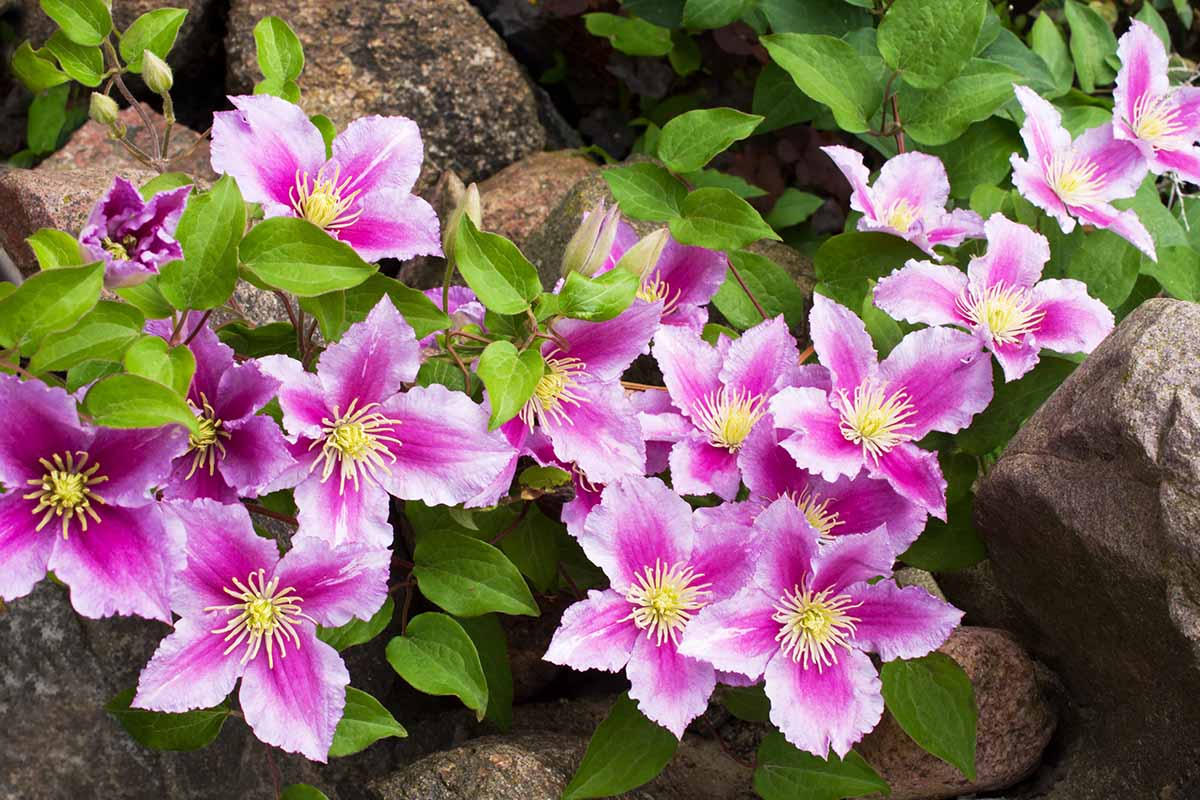
Whether you have acres of fencing for plants to spread horizontally or a few feet of balcony and a pot with a vertical trellis, you’ll appreciate the beauty and privacy flowering vines afford the gardener who cares for them.
However you plan to enjoy yours, first carefully research growing habits and cultural requirements. Then choose those best suited to your locale.
Do you have flowering vines at your house? Please tell us about them in the comments section below. Feel free to upload pictures of your favorites!
If you found this article informative and want to read more about garden vines, we recommend the following:
